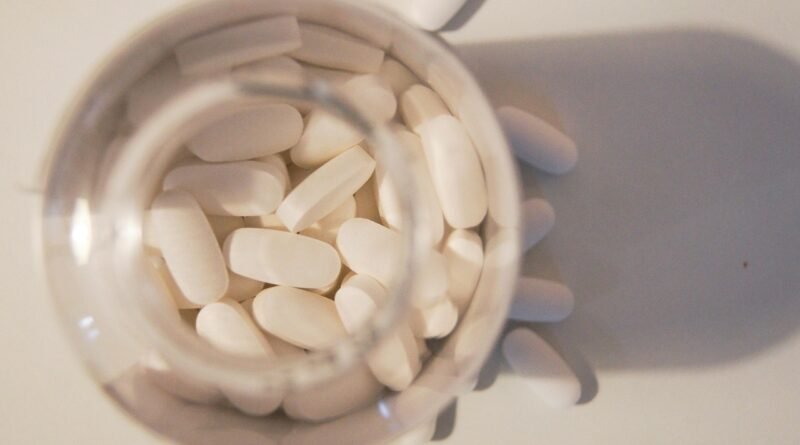Harvard Health Ad Watch: Got Side Effects? There’s a Medicine for That
One is most likely to experience the common effects of taking these kinds of drugs. However, the point is, those drugs actually aim for the improvement of health but can produce unpleasing ones at the same time. Most of us experience some very familiar techniques to deal with these side effects, such as dose alteration and drug switching, but in rare cases, the remedy has a different medication to be solved.

Another such remedy/additive drug is valbenazine (Ingrezza), which is targeted against a specific condition called tardive dyskinesia (TD), which emanates from the usage of other medicines, especially those intended for the brain-related therapeutic use. What is the working mechanism and efficacy of this drug? Or are there any other effective alternatives? Let’s first discuss what is meant by tardive dyskinesia, how this drug is used to promote a cure, and what is significant for the patient.
Tardive Dyskinesia: What Is It?
It is a neurological disorder involving involuntary repetitive movements often affecting the face, limbs, or torso. The movements may include rapid eye blinking, grimacing, tongue thrusting, or the uncontrolled movements of arms and legs. Tardive dyskinesia is related to long-term use of many medications that treat disorders such as schizophrenia or bipolar disorder.
It could, unfortunately, prove irreversible if not caught and addressed early. That’s why it is absolutely important for anyone who takes medications to cause TD to stay in constant contact with their healthcare provider, and keep them updated on anything that seems troublesome. You would want to consult your provider as soon as possible if you find yourself moving strangely.
The Ingrezza Ad: Take a Closer Look
The latest ad campaign from Ingrezza (valbenazine) is focusing on featuring real people living with the ailment in its contention for attracting people. A sidewalk sale features a young man directly interacting with customers, even though his mental health might have improved, he has scooped some embarrassing effects of TD in fumbling and dropping the camera he’s selling. The ad is focused on his hands that shake without control, which catches does not only draw from but also the disruptive effect of TD on his life.
Afterwards, a young woman appears at a cookout in what again featured on her face as she blinked and grimaced uncontrollably. As her voice-over lets us into it, she feels her involuntary movements are “always in the spotlight.” But later, we see both individuals smiling and interacting happily with their surroundings, leaving one to assume that things were surely better for them after beginning Ingrezza treatment.
And since this is the advert, it claims every proud inch of Ingrezza as being the #1 treatment for the most adult patients with TD, combined power of every one of these wonderful doses-per-day-in-one pill can bring about improvement in symptoms for about 700,000 patients. Second, the ad promises that the application of Ingrezza can go along with most medications used for mental health without fear of dual effects or double diagnosis slippage.
But then again, the advert isn’t entirely about Ingrezza; it even draws that favorite audience having potential by having them deeply probe what the substance has to offer, including side effects and price tag.
Ingrezza’s Side Effects: A Two-Edged Sword
To keep the advertising Fair and to comply with the FDA statute regarding the advertisement of drugs, the advertisement presents common and serious side effects for Ingrezza, including the following:
Sleepiness (most common symptom),
Depression, suicidal thoughts or actions,
Heart rhythm problems,
Allergic reactions–some of them dangerous for life,
Fever, muscle stiffness, difficulty in thinking (possibly also life-threatening),
Abnormal movements, which is very ironic, given that Ingrezza is intended to remedy such symptoms.
Yes, you read it right-Ingrezza itself brings about abnormal movements and may worsen the very condition that it is intended to treat. This induced side effect demonstrates the intricacy of treating symptoms with medications against some other medications and raises some crucial concerns regarding the total safety and efficacy of such treatments.
What the Ad Gets Right
However, the advertisement well cites some things:
Correctly describes the impact of TD on a person’s physical and psychological dimension, as well as emphasizes the prompt recognition and early treatment of the condition.
Stipulates the one-simple dose of Ingrezza; thus, once-a-day consumption could even be considered a much more important advantage than other drugs that require a twice-daily regimen by that consumer.
Cites clinical studies with effectiveness claims that help build trust in possible users.
Discloses both common and serious side effects since the requirement of the FDA enables personally-centered information for patients to have scientific knowledge for informed decisions.
Yet, it misses quite some things as far as the advertisement is concerned.
What the Ad Leaves Out: Important Information You Must Know
However, while it does a lot in terms of concern and really smooth talking about a clean and hopeful picture, it leaves many significant things that can help decide whether Ingrezza indeed is right for you:
Which medications cause TD? The ad fails to name those drugs which TS can derive from. This is necessary because these drugs can make them aware of whether their medications are leaving them unprotected against to the condition or not, as commonly available medications used in many mental health conditions include haloperidol (Haldol), fluphenazine (Prolixin), risperidone (Risperdal), and olanzapine (Zyprexa), which, over time, will cause TD. Some putative medicines for nausea include metoclopramide (Reglan).
Ingrezza – Is it the only treatment available? The advertisement suggests that Ingrezza is the most suitable or the singular treatment for TD, but it is not the only treatment available. Other treatment options available are deutetrabenazine (Austedo) and tetrabenazine (Xenazine), which may be offering similar benefits with lesser side effects. Injection of botulinum toxin (Botox) can also relax the muscles that cause involuntary movements. For severe cases, deep brain stimulation which is electrical impulses used to regulate nerve signals can also be considered.
What about effectiveness and the costs involved? The advertisement says that by using Ingrezza, seven out of ten patients would be able to show significance of their illness improvement, but it did not provide a clear picture on the amount of improvement expected. In clinical trials, after six weeks of treatment, approximately 24% of people reported very low levels of symptoms or no symptoms at all, while as high as 67% reported moderate improvement achieved.
For purposes of cost, Ingrezza can cost up to $8,700 a month, and the ad makes no reference to financial aid programs or options available to patients who could not afford the drug. This would matter greatly, especially since such condition like TD calls for long-term treatment.
In Conclusion: Weigh Pros against the Cons
One must weigh all options when considering treating one drug-induced side effect with another, especially in the case of TD, where Ingrezza may offer relief to many patients but at a high cost and possible side effects of its own.The most logical thing to do is consider bringing in all other options with your health professional-whether that means switching medications, adjusting dose, or otherwise exploring alternative treatments. Whatever road you follow, however, the goal must always be toward finding the most effective solution with the fewest risks and disadvantages.
